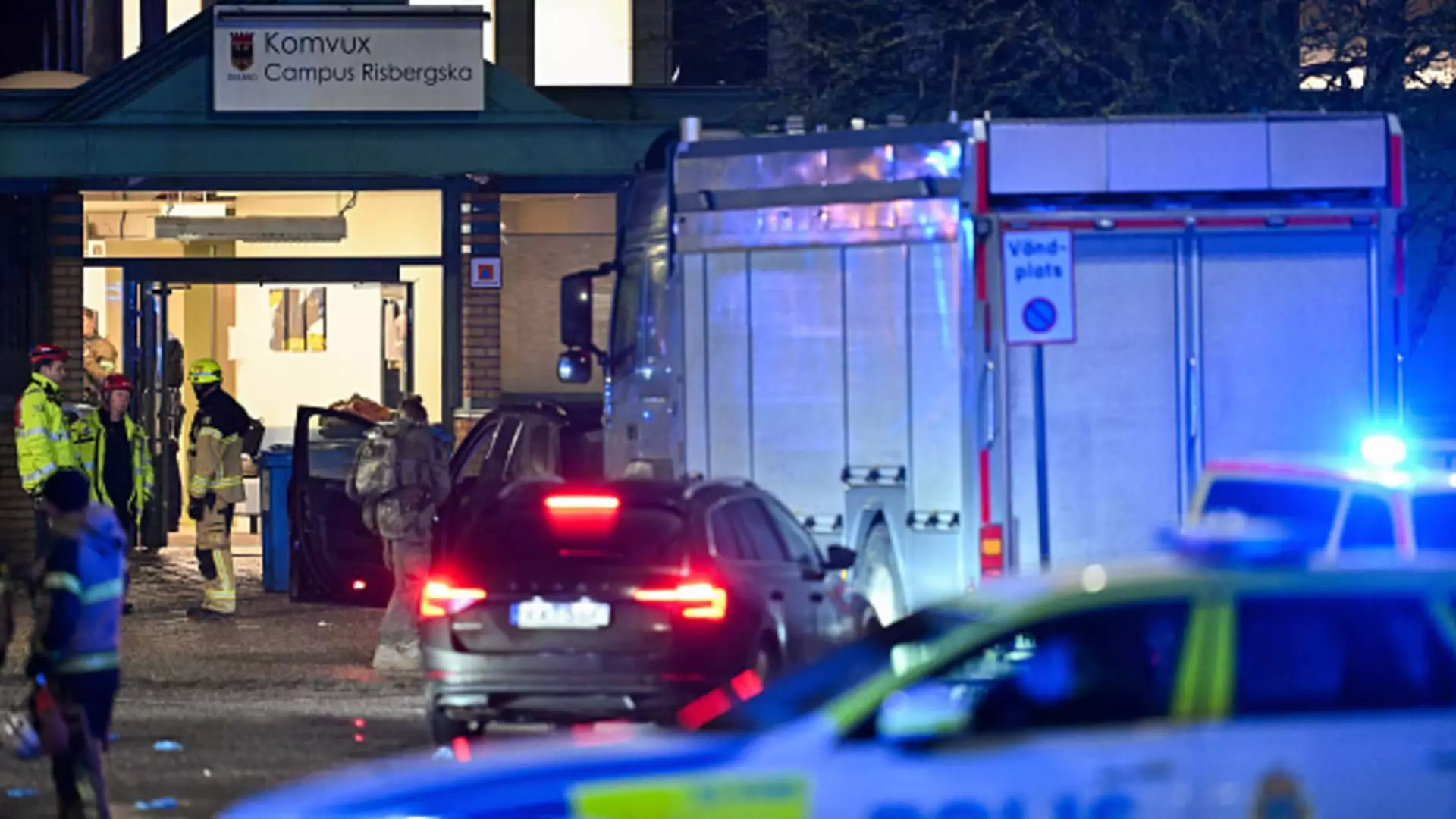In a horrific turn of events, ten individuals lost their lives in a shooting at the Risbergska school in Örebro, Sweden, marking a profound tragedy for the nation. This incident occurred on a Tuesday, and it has quickly ascended to the grim distinction of being the deadliest attack in Sweden’s history. The national reaction has been one of sorrow and disbelief, with authorities struggling to piece together the motivations behind such an act of violence. Local police chief Roberto Eid Forest indicated that the shooter was likely among the deceased, which raises complex questions about how a single individual could unleash such devastation within an educational environment.
As details emerged, it became clear that the Risbergska school serves a unique demographic, primarily adult learners who failed to complete their formal education or who are immigrants striving to gain educational qualifications and improve their Swedish language skills. This tragic event, therefore, resonates deeply within a community that values education as a pathway to opportunity. The Prime Minister, Ulf Kristersson, expressed that this was a “painful day for the whole of Sweden,” reflecting the shared grief and shock that permeates across all strata of Swedish society.
In the immediate aftermath, there has been a collective sense of vulnerability among the population, especially within educational institutions. Swedish schools have generally been considered safe havens, whether for children or adults pursuing further education. Therefore, this act of violence acts not only as a moment of crisis but also as a stark wake-up call to address broader societal safety issues.
As investigations unfold, police are focusing on various angles to ascertain the shooter’s motives and backgrounds. The investigation’s complexity is underscored by the need to analyze a large crime scene meticulously. Witness interviews and a profile of the perpetrator are paramount in understanding what led to this gruesome act. Authorities have noted that the gunman had no prior record with police, which complicates efforts to find any forewarning signs of his violent intentions.
Local officials have indicated that the shooter acted alone, although the continued lack of clarity regarding potential motives leaves many questions unanswered. It raises the uncomfortable specter of how unknown individuals can harbor such destructive impulses, potentially evoking conversations around mental health, societal pressures, and the accessibility of firearms.
In the wake of this incident, expressions of condolences and solidarity have poured in from all levels of government and society. King Carl XVI Gustaf extended his sympathies, underscoring the royal family’s anguish over the tragedy. Similarly, European Commission President Ursula von der Leyen shared her sentiments on social media, emphasizing collective grief across Europe. Such responses illustrate that the repercussions of this event resonate well beyond Sweden’s borders, highlighting a shared humanity in the face of brutality.
Survivor accounts further amplify the emotional weight of the day. A teacher from the school recounted a harrowing escape, painting a vivid picture of chaos as she guided her students to safety amidst gunfire. Her experience reflects the inherent risks that educational environments now face, compelling a broader discussion on security protocols within these spaces.
A Nation Confronts Its Issues
Sweden has been grappling with escalating gang-related violence in recent years, a reality that starkly contrasts with its traditional image as a peaceful, progressive nation. The rise in gun-related crimes is alarming, albeit primarily concentrated among criminal factions, which complicates public safety perceptions. Historically, mass shootings have been a rarity in Sweden, making this incident not only an acute shock but also an indicator of deeper societal issues that warrant comprehensive examination.
The statistics draw a disturbing picture: between 2010 and 2022, there were only ten fatalities resulting from school-related violence, suggesting that the norms of safety in educational institutions are being upended. Gun ownership in Sweden is relatively high by European standards, largely attributed to hunting, yet the burgeoning issue of illegal firearms linked to gang activity makes the present moment particularly precarious.
As Sweden mourns the loss of innocent lives, this incident prompts a collective call for action and profound reflection. Citizens, leaders, and organizations must engage in an open dialogue about the undercurrents of violence and how to bolster protective measures within schools and communities. Building a consensus around effective solutions, including mental health initiatives, crime prevention strategies, and legislative reforms regarding firearm access, will be essential.
Ultimately, the shooting at Risbergska not only marks a painful chapter in Sweden’s history but also serves as a crucial turning point. As the nation confronts its grief, it must also commit to redefining what safety means in modern society, ensuring that hope and healing emerge from this tragedy.


Leave a Reply